New horizons for imaging lymphatic function
- PMID: 18519956
- PMCID: PMC3094766
- DOI: 10.1196/annals.1413.002
New horizons for imaging lymphatic function
Abstract
In this review, we provide a comprehensive summary of noninvasive imaging modalities used clinically for the diagnosis of lymphatic diseases, new imaging agents for assessing lymphatic architecture and cancer status of lymph nodes, and emerging near-infrared (NIR) fluorescent optical imaging technologies and agents for functional lymphatic imaging. Given the promise of NIR optical imaging, we provide example results of functional lymphatic imaging in mice, swine, and humans, showing the ability of this technology to quantify lymph velocity and frequencies of propulsion resulting from the contractility of lymphatic structures.
Conflict of interest statement
The authors declare no conflicts of interest.
Figures

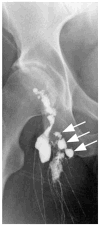


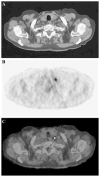
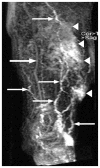







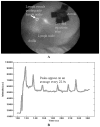

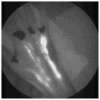
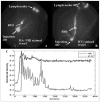
Similar articles
-
Quantitative imaging of lymph function.Am J Physiol Heart Circ Physiol. 2007 Jun;292(6):H3109-18. doi: 10.1152/ajpheart.01223.2006. Epub 2007 Feb 16. Am J Physiol Heart Circ Physiol. 2007. PMID: 17307997
-
A Validation Study of Near-Infrared Fluorescence Imaging of Lymphatic Vessels in Humans.Lymphat Res Biol. 2017 Sep;15(3):227-234. doi: 10.1089/lrb.2016.0061. Epub 2017 Jul 27. Lymphat Res Biol. 2017. PMID: 28749720
-
Indocyanine green nanoparticles undergo selective lymphatic uptake, distribution and retention and enable detailed mapping of lymph vessels, nodes and abnormalities.J Drug Target. 2018 Jun-Jul;26(5-6):494-504. doi: 10.1080/1061186X.2018.1433681. Epub 2018 Feb 12. J Drug Target. 2018. PMID: 29388438 Free PMC article.
-
Comprehensive Assessment of Indocyanine Green Usage: One Tracer, Multiple Urological Applications.Eur Urol Focus. 2018 Sep;4(5):665-668. doi: 10.1016/j.euf.2018.08.017. Epub 2018 Sep 7. Eur Urol Focus. 2018. PMID: 30197043 Review.
-
A new lymphography protocol and interpretation principles based on functional lymphatic anatomy in lower limb lymphedema.Anat Sci Int. 2024 Mar;99(2):153-158. doi: 10.1007/s12565-023-00754-2. Epub 2023 Dec 22. Anat Sci Int. 2024. PMID: 38133703 Free PMC article. Review.
Cited by
-
Aging Is Positively Associated with Peri-Sinus Lymphatic Space Volume: Assessment Using 3T Black-Blood MRI.J Clin Med. 2020 Oct 19;9(10):3353. doi: 10.3390/jcm9103353. J Clin Med. 2020. PMID: 33086702 Free PMC article.
-
A multiresolution approach with method-informed statistical analysis for quantifying lymphatic pumping dynamics.Npj Imaging. 2025 Jan 17;3(1):2. doi: 10.1038/s44303-024-00061-z. Npj Imaging. 2025. PMID: 40604254 Free PMC article.
-
Near-infrared photoimmunotherapy of pancreatic cancer using an indocyanine green-labeled anti-tissue factor antibody.World J Gastroenterol. 2018 Dec 28;24(48):5491-5504. doi: 10.3748/wjg.v24.i48.5491. World J Gastroenterol. 2018. PMID: 30622378 Free PMC article.
-
Utility of indocyanine green fluorescence lymphography in identifying the source of persistent groin lymphorrhea.Plast Reconstr Surg Glob Open. 2014 Oct 7;2(9):e210. doi: 10.1097/GOX.0000000000000135. eCollection 2014 Sep. Plast Reconstr Surg Glob Open. 2014. PMID: 25426393 Free PMC article.
-
Pediatric lymphangiectasia: an imaging spectrum.Pediatr Radiol. 2015 Apr;45(4):562-9. doi: 10.1007/s00247-014-3191-x. Epub 2014 Oct 10. Pediatr Radiol. 2015. PMID: 25301383
References
-
- Alitalo K, Tammela T, Petrova TV. Lymphangiogenesis in development and human disease. Nature. 2005;438:946–953. - PubMed
-
- Ji RC. Characteristics of lymphatic endothelial cells in physiological and pathological conditions. Histol Histopathol. 2005;20:155–175. - PubMed
-
- Harvey NL, Srinivasan RS, Dillard ME, et al. Lymphatic vascular defects promoted by Prox1 haploin-sufficiency cause adult-onset obesity. Nat Genet. 2005;37:1072–1081. - PubMed
-
- Cueni LN, Detmar M. New insights into the molecular control of the lymphatic vascular system and its role in disease. J Invest Dermatol. 2006;126:2167–2177. - PubMed
Publication types
MeSH terms
Substances
Grants and funding
LinkOut - more resources
Full Text Sources
Other Literature Sources
Miscellaneous

